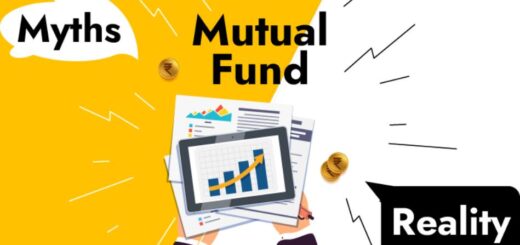Different types of Debt Mutual Funds
See below for the Different types of Debt Mutual Funds Latest Information, SIP in Tirupati, Mutual Funds in Tirupati, and More.
Understanding Different Types of Debt Mutual Funds
Debt mutual funds are a popular investment choice for those seeking relatively stable returns with lower risk compared to equity investments. These funds primarily invest in fixed-income instruments like bonds, government securities, corporate debt, and other money market instruments. Understanding the various types of Different types of Debt Mutual Funds in detail.
Different types of Debt Mutual Funds
Debt mutual funds can be broadly classified into several categories, each with distinct characteristics and benefits. Here’s an in-depth look at the various types:
1. Liquid Funds
Definition: Liquid funds invest in short-term market instruments with maturities up to 91 days.
Characteristics:
- Highly liquid and low-risk.
- Suitable for parking surplus funds for very short durations.
- Typically offer better returns than savings accounts.
Who Should Invest: Ideal for investors looking for short-term parking of funds with high liquidity and minimal risk.
2. Ultra Short Duration Funds
Definition: These funds invest in debt and money market instruments such that the portfolio’s Macaulay duration is between 3 to 6 months.
Characteristics:
- Slightly higher returns compared to liquid funds.
- Can withstand minor interest rate fluctuations.
- Suitable for short-term investments with a bit more yield than liquid funds.
Who Should Invest: Suitable for investors with a short-term horizon of 3 to 6 months who seek slightly higher returns than what liquid funds offer.
3. Short Duration Funds
Definition: These funds invest in debt and money market instruments with a Macaulay duration of 1 to 3 years.
Characteristics:
- Moderate risk and returns.
- Less sensitive to interest rate changes compared to long-duration funds.
- Suitable for medium-term investment goals.
Who Should Invest: Investors with an investment horizon of 1 to 3 years looking for stable returns with moderate risk.
4. Medium Duration Funds
Definition: Medium duration funds invest in debt and money market instruments with Macaulay durations of 3 to 4 years.
Characteristics:
- Higher risk and potential returns compared to short-duration funds.
- Sensitive to interest rate movements.
- Suitable for intermediate-term goals.
Who Should Invest: Investors who can stay invested for 3 to 4 years and are comfortable with moderate interest rate risks for potentially higher returns.
5. Long Duration Funds
Definition: These funds invest in debt and money market instruments with a Macaulay duration greater than 7 years.
Characteristics:
- Higher interest rate risk.
- Potential for higher returns over long periods.
- Suitable for long-term investment horizons.
Who Should Invest: Investors with a long-term horizon (over 7 years) willing to take on higher interest rate risk for potentially higher returns.
6. Dynamic Bond Funds
Definition: Dynamic bond funds have the flexibility to change the portfolio duration based on the fund manager’s view of interest rate movements.
Characteristics:
- Can adjust exposure to short-term or long-term instruments.
- Potential for higher returns through active management.
- Suitable for varying interest rate cycles.
Who Should Invest: Investors looking for professional management of interest rate risks with no specific investment horizon.
7. Credit Risk Funds
Definition: These funds invest at least 65% of their total assets in corporate bonds rated below the highest credit quality.
Characteristics:
- Higher yield potential due to investment in lower-rated securities.
- Elevated credit risk compared to other debt funds.
- Suitable for those seeking higher returns and willing to accept higher credit risk.
Who Should Invest: Investors with a higher risk tolerance seeking better yields, comfortable with the associated credit risks.
8. Corporate Bond Funds
Definition: Corporate bond funds invest at least 80% of their assets in high-quality corporate bonds.
Characteristics:
- Lower credit risk compared to credit risk funds.
- Potential for better returns than government securities.
- Suitable for those looking for a balance between yield and risk.
Who Should Invest: Investors seeking relatively safer corporate debt with the potential for higher returns than government securities.
9. Gilt Funds
Definition: Gilt funds invest primarily in government securities.
Characteristics:
- Virtually no credit risk as they are backed by the government.
- Sensitive to interest rate changes.
- Suitable for risk-averse investors who prefer government-backed instruments.
Who Should Invest: Ideal for conservative investors seeking safety with moderate returns.
10. Money Market Funds
Definition: These funds invest in money market instruments with maturities up to one year.
Characteristics:
- High liquidity and low risk.
- Suitable for very short-term investment needs.
- Typically offer slightly better returns than liquid funds.
Who Should Invest: Investors looking for a safe place to park funds for very short durations, typically less than a year.
11. Fixed Maturity Plans (FMPs)
Definition: FMPs are close-ended funds with a fixed maturity date.
Characteristics:
- Invest in instruments that match the fund’s maturity.
- Less affected by interest rate movements if held to maturity.
- Suitable for investors with a specific time horizon.
Who Should Invest: Ideal for investors with a fixed investment period seeking predictable returns.
Selecting the Right Debt Mutual Fund
When selecting a debt mutual fund, consider the following factors:
- Investment Horizon: Choose a fund that matches your time frame. For instance, liquid funds for very short-term needs or long-duration funds for long-term goals.
- Risk Appetite: Assess your risk tolerance. If you are conservative, gilt or corporate bond funds might suit you better.
- Interest Rate Outlook: Consider current interest rate scenarios. Dynamic bond funds can be advantageous in fluctuating interest rate environments.
- Credit Risk: Understand the credit risk involved in different funds. Credit risk funds offer higher returns but come with higher risk.
Debt mutual funds offer a wide array of options catering to different investor needs, from ultra-conservative liquid funds to higher-yielding credit risk funds. By understanding the characteristics of each type, investors can align their portfolios with their financial goals, risk tolerance, and investment horizons for optimal outcomes. This is the brief information about the Different types of Debt Mutual Funds in detail.



